Results 6,971 to 6,980 of 12091
Thread: Anandtech News
-
05-17-17, 12:15 PM #6971
Anandtech: The Google I/O 2017 Keynote Live Blog
Taking place today is Google's annual I/O developer conference. Starting things off as always is the keynote, where we should receive updates on several Google technologies, initiaitves, and other Google-centric projects.
More...
-
05-17-17, 01:24 PM #6972
Anandtech: AT20 Giveaway Day 16.5: Gigabyte Provides Your Next Z170 Motherboard
Looking to build a new Intel system? Well then this afternoon’s giveaway should be just what you need. Today Gigabyte is providing a trio of their Z170 gaming motherboards: the Z170X-Ultra Gaming, the Z170X-Gaming 5, and the Z170X-Gaming. As an added kicker, they’ve also thrown in some swag: Gigabyte motherboard-themed building block kits.
- Gigabyte Z170X-Ultra Gaming Mobo + Gigabyte Building Blocks Kit + T-Shirt
- Gigabyte Z170X-Gaming 5 Mobo + Gigabyte Building Blocks Kit + T-Shirt
- Gigabyte Z170X-Gaming 7 Mobo + Gigabyte Building Blocks Kit + Hoodie
- Gigabyte Building Blocks Kit (#1)
- Gigabyte Building Blocks Kit (#2)
The AnandTech 20th Anniversary Celebration – Gigabyte Technology Giveaway
Gigabyte Z170X-Ultra Gaming
Leading the pack of today’s prizes is Gigabyte’s Z170X-Ultra Gaming motherboard. The LGA 1151 motherboard sports 3 PCIe x16 slots (2 off of the CPU, one x4 off of the chipset), 3 PCIe x1 slots, a single full-feature M.2 slot, and unique for Gigabyte’s lineup, a U.2 connector for high performance 2.5” SSDs. In terms of third party controllers, we’re looking at a Realtek ALC 892 for audio, and an Intel I219-V GigE LAN controller, and, most significantly, an Intel “Alpine Ridge” controller for USB 3.1 (Gen 2) and Thunderbolt 3 support. Particularly interesting here, Gigabyte is one of a handful of vendors to support the highest USB Power Delivery 2.0 states, meaning the board is capable of delivering 100W of power over its Thunderbolt 3/USB-C port.
Gigabyte Z170X Gaming 7
The second motherboard among today’s prizes is Gigabyte’s Z170X Gaming 7. The layout of this board is quite similar to the Z170X-Ultra gaming, relying on the same 3 PCIe x16 slot + 3 PCIe x1 slot configuration. However the board features two M.2 slots, both of which support both SATA and PCIe drives. For third party controllers, as this is a more high-end gaming focused board, Gigabyte has equipped the board with a Creative Sound Core audio controller for audio, both Intel and Killer E2400 controllers for dual NIC functionality, and like its Ultra counterpart, an Intel “Alpine Ridge” controller for USB 3.1 (Gen 2) and Thunderbolt 3 support.
Gigabyte Z170X Gaming 5
Our final motherboard prize of the day is Gigabyte’s Z170X Gaming 5. The smaller sibling to the Gaming 7, this board has the same triple PCIe x16 (2 CPU, 1 PCH) slot layout, but with 4 PCIe x1 slots and a single M.2 slot. For third party controllers Gigabyte is using a Realtek ALC 1150 for audio, both Intel and Killer E2201 controllers for dual NIC functionality, and an Intel controller for USB 3.1 (Gen 2) support.
Gigabyte Building Blocks
Last among our prizes, Gigabyte has also thrown in some outright swag with their building blocks kit. The kit lets you build – you guessed it – a toy motherboard, complete with Gigabyte and Intel logos. No word on what kind of CPU it supports though.
Finally, as with our other giveaways, this afternoon’s giveaway is only open for 48 hours, so be sure to enter soon. However please note that for legal reasons, we’re only able to open these giveaways to residents of the United States.
Good luck to everyone! And be sure to check in tomorrow for our next giveaway.
More...
-
05-17-17, 02:13 PM #6973
Anandtech: HTC Announces New Standalone Vive VR Headset with Google Daydream Support
Today at Google I/O 2017, Google and HTC announced a new Daydream VR compatible Vive headset. This new device in the Vive family is a standalone unit that does not require a PC or a smartphone to power the experience and is completely wireless. HTC says that this will be one of the first standalone headsets to support Google’s Daydream platform, which implies other headsets are coming too.
HTC is not revealing much about its new Vive right now. The hardware configuration is unknown, but Qualcomm has been hinting at several standalone VR headsets coming this year that will be using its Snapdragon 835 SoC, which would seem to be a good fit for the Vive. Battery size was not specified either, but without the need to carry an entire smartphone in the headset it should be able to put that volume and weight savings towards a battery that’s larger than typically found in a 5.5-inch phone. It will support the new Daydream WorldSense motion tracking, though.
The standalone Vive will be available “later this year” for an unspecified price.
More...
-
05-17-17, 06:16 PM #6974
Anandtech: Google I/O 2017: New AR/VR Experiences
Today at its annual developer conference, Google made several announcements about what augmented and virtual reality projects it and its partners have been working on. Google just launched its Daydream VR platform 6 months ago, but already there are over 150 VR apps on Google Play and a small selection of Daydream phones, including the Google Pixel/Pixel XL, Huawei Mate 9 Pro, Moto Z/Moto Z Force, and ZTE Axon 7. We’ll be able to add a few more phones to this list later this summer, because Google revealed that Samsung’s Galaxy S8 and S8+ will receive a software update making them Daydream compatible. LG’s next flagship, likely the LG V30 that launches in the second half of the year, will also be Daydream ready.
Back in October, Google launched the Daydream View, a smartphone-powered VR headset, alongside its Pixel phones as part of its Daydream platform. The fabric-covered headset was designed to be comfortable to wear and serve as an affordable entry point for VR. Today during its opening keynote presentation, Google added a new device category to Daydream: standalone VR headsets. These standalone head-mounted displays (HMDs) are self contained and do not require a PC or smartphone and are completely wireless. Google worked with Qualcomm to create a reference design for partners, which means these products will likely be using a Snapdragon 835 SoC. The first Daydream HMDs will be an unnamed product from Lenovo and a new HTC Vive, both of which will arrive “later this year” and support Google’s WorldSense positional tracking, a new Daydream technology that’s derived from Project Tango.
Speaking of Tango, Google has used the technology’s ability to track motion, measure distance, and establish its position within an environment to enable its new Visual Positioning Service (VPS) that allows you to map indoor locations. While GPS establishes your location outdoors and guides you to a destination (a store, for example), VPS does the same thing indoors, guiding you to a specific location or even a specific product within the store. This AR experience uses cameras to recognize objects and landmarks within the environment and provides directions to your destination. VPS currently works in select museums and Lowe’s home improvement stores, and will require mapping and product/feature location information before the service is available in other indoor locations. It will also require a Tango-compatible device, like the ASUS ZenFone AR that will be available this summer.
Google also announced that it’s bringing Tango into the classroom with Expeditions AR. It said that over 2 million students have already taken virtual field trips using Expeditions VR with Google Cardboard over the past 2 years. Now with a Tango-enabled device, students can collectively experience and interact with virtual objects, perhaps a strand of DNA, anatomical models, or an internal combustion engine, within their environment. Expeditions AR lessons will be coming to schools this fall through a Pioneer Program.
More...
-
05-18-17, 01:33 AM #6975
Anandtech: Google I/O 2017: Google Assistant and Google Home
More and more people are using the phrase “Ok Google” to start a conversation to find information or perform actions using the Google Assistant. Launched last fall, the new assistant is already available on over 100 million devices and is rapidly evolving. Today at Google I/O, its creator took the stage to discuss how Google Assistant is expanding its capabilities and reach on smartphones and Google Home.
Google Home, a standalone voice activated smart-appliance and speaker, is getting the most attention, with a number of significant improvements on the way. In a few months, Google Home will be able to make hands-free VOIP calls to any phone in the U.S. or Canada for free. There’s no additional setup, apps to install, or reliance on a landline or cell phone; just ask the Assistant to place the call. And with multi-user support (the Assistant recognizes individual voices), it’s smart enough to call your “mom” and not your roommate’s “mom.” Google Home will also provide proactive notifications in the near future. Initially, the Assistant will focus on travel, keeping track of upcoming flights and appointments and then alerting you to flight delays or traffic alerts. For the latter, it will even calculate a new travel time and suggest leaving earlier so you’re not late to your next appointment. Another new feature, this one rolling out today, is the ability to use Assistant on Google Home to create reminders and calendar appointments, which will then appear on your other Android devices.
Google Home is also getting some new media capabilities. In addition to Deezer, Pandora, Soundcloud, and others it will soon support free music streaming from Spotify, and with the addition of Bluetooth, it will be able to play music from a nearby Android or iOS device.
Moving from audio to video, Google Home is adding some new video streaming partners too, including CBS All Access, HBO NOW, and HGTV. Later this year, the Assistant on Google Home will gain the ability to send visual responses to your TV via Chromecast. For example, saying “Ok Google. What's on my calendar today?” will show your daily schedule on the TV. Of course it will show other common things too such as the weather forecast, and it will integrate with Google’s YouTube TV service. It was not clear during the onstage demo, but I assume Google Home will use visual responses when it senses a Chromecast device and switch back to audio responses when the TV is off.
The last bit of Google Home news is that the device will be available in Australia, Canada, France, Germany, and Japan later this year.
More people will soon be able to use Google Assistant on Android devices too. First, it’s learning to speak several new languages this summer, including Brazilian Portuguese, French, German, and Japanese, along with Italian, Korean, and Spanish by the end of the year. Google Assistant is also coming to the iPhone in the form of a new app that’s already available on Apple’s App Store. Now iPhone users can use its natural language interface to ask questions, schedule appointments, make phone calls, send texts and emails, play music, and more.
The previously announced Google Assistant SDK will allow third parties to integrate Assistant into even more devices, and by leveraging Actions on Google, developers can integrate the Assistant directly within their apps. There’s also a new Transactions API (currently a developer preview) that will allow developers to offer a “conversational ordering experience” that will help a customer add items to a shopping cart, collect address and billing information, make the purchase or reservation using your fingerprint or other authentication method, and even send order confirmation or shipping updates.
One of the priorities for Google Assistant is making it more conversational; however, there are times in public when you cannot actually speak to your phone, which is why, starting today, you can also type your queries and avoid annoyed or quizzical looks from nearby strangers.
Perhaps the coolest new feature coming to Android devices is Google Lens, a new AR experience that uses computer vision to recognize objects in the environment, allowing you to have a conversation with Assistant about what you see. By tapping the Google Lens icon in the camera, it can perform visual language translation (similar to what Google Translate does); help you scan business cards and create new contacts, and even recognize a sign for an upcoming concert and offer you the ability to buy tickets, add the event to your calendar, or even sample some of the band’s songs.
New products like Google Assistant and Google Lens make it clear that Google is no longer a search company; it’s an artificial intelligence company that’s focused on integrating speech recognition, language processing, contextual awareness, and computer vision with Google Search and data from other Google services such as Gmail to provide new experiences across more devices using a more natural interface.
More...
-
05-18-17, 11:46 AM #6976
Anandtech: AT20 Giveaway Day 17: Motorola Keeps You Mobile With Moto Zs
Good morning everyone. We’re now on day 17 of our 20 day giveaway celebration of AnandTech’s 20th anniversary, so the end is quickly approaching.
This morning’s prizes come from the mobile masters over at Motorola. The long-time supplier of smartphones and smartwatches has sent over a trio of their latest Moto Z phones, so if you need an updated phone, this is the giveaway for you. Altogether we have the Moto Z Force (Droid Edition), Moto Z (Droid Edition), and Moto Z Play (Droid Edition) to give away.
- Moto Z Force (Droid Edition)
- Moto Z (Droid Edition)
- Moto Z Play (Droid Edition)
The AnandTech 20th Anniversary Celebration – Motorola Giveaway
Please note that these are all Droid Edition phones, which means they will only work on Verizon’s network.Motorola Moto Z Droid Family Moto Z Force Droid Moto Z Droid Moto Z Play Droid SoC Qualcomm Snapdragon 820
2x Kryo @ 2.15GHz
2x Kryo @ 1.59GHz
Adreno 530 @ 624MHzQualcomm Snapdragon 820
2x Kryo @ 2.15GHz
2x Kryo @ 1.59GHz
Adreno 530 @ 624MHzQualcomm Snapdragon 625
8x Cortex-A53 @ 2.0GHz
Adreno 506 @ 650MHzRAM 4GB LPDDR4-3188 4GB LPDDR4-3188 3GB LPDDR3-1866 NAND 32GB / 64GB (UFS 2.0)
+ microSD32GB / 64GB (UFS 2.0)
+ microSD32GB (eMMC 5.1)
+ microSDDisplay 5.5-inch 2560x1440 SAMOLED
Moto ShatterShield5.5-inch 2560x1440 SAMOLED
Corning Gorilla Glass5.5-inch 1920x1080 SAMOLED
Corning Gorilla GlassDimensions 155.9 x 75.8 x 6.99 mm
163 grams153.3 x 75.3 x 5.19 mm
136 grams156.4 x 76.4 x 6.99 mm
165 gramsModem Qualcomm X12 (Integrated)
2G / 3G / 4G LTE (Category 12/13)Qualcomm X12 (Integrated)
2G / 3G / 4G LTE (Category 12/13)Qualcomm X9 (Integrated)
2G / 3G / 4G LTE (Category 7)SIM Size NanoSIM NanoSIM NanoSIM Front Camera 5MP, 1/4" OmniVision OV5693, 1.4µm pixels, f/2.2, Auto HDR, LED flash 5MP, 1/4" OmniVision OV5693, 1.4µm pixels, f/2.2, Auto HDR, LED flash 5MP, 1/4" OmniVision OV5693, 1.4µm pixels, f/2.2, Auto HDR, LED flash Rear Camera 21MP, 1/2.4" Sony IMX338 Exmor RS, 1.12µm pixels, f/1.8, PDAF + Laser AF, OIS, Auto HDR, dual-color LED flash 13MP, 1/3.06" Sony IMX214 Exmor RS, 1.12µm pixels, f/1.8, Laser AF, OIS, Auto HDR, dual-color LED flash 16MP, 1/2.4" OmniVision OV16860, 1.3µm pixels, f/2.0, PDAF + Laser AF, Auto HDR, dual-color LED flash Battery 3500 mAh
non-removable2600 mAh
non-removable3510 mAh
non-removableConnectivity 802.11a/b/g/n/ac 2x2 MIMO, BT 4.1 LE, NFC, GPS/GNSS, USB Type-C, Moto Mods connector 802.11a/b/g/n/ac 2x2 MIMO, BT 4.1 LE, NFC, GPS/GNSS, USB Type-C, Moto Mods connector 802.11a/b/g/n, BT 4.0 LE, NFC, GPS/GNSS, USB Type-C, Moto Mods connector
Moto Z Force (Droid Edition)
Starting things off, we have Motorola’s current flagship phone, the Moto Z Force. This phone is exclusive to Verizon, and is based around a Qualcomm Snapdragon 820 with all the trimmings, including 4GB of RAM and 32GB of UFS 2.0 NAND. The display is a 5.5-inch 1440p SAMOLED, and, unique to the Force, uses Motorola’s own ShatterShield display cover/reinforcement technology. Rounding out the package is a 21MP rear camera with OIS, and a 3500mAh internal battery.
But the truly unique offering for the Moto Z Force – and the entire Moto Z family – is the Moto Mods system, which allows for hot-swapping additional modular pieces on to the back of the phone. Available mods include micro-projectors, a larger speaker, an optical zoom camera, and, of course, battery packs. All of these mods are held in place through a series of magnets, allowing them to be quickly added and removed as necessary.
Moto Z (Droid Edition)
Next up we have the vanilla Moto Z. This phone is quite similar to the Moto Z Force, but makes a couple of small changes to differentiate itself, including quite literally being smaller. Under the hood the phone is powered by a Snapdragon 820 paired with 4GB of RAM and 32GB of UFS 2.0 NAND, and over the hood is a 1440p SAMOLED display covered in Gorilla Glass. However this phone is only 5.19mm thick and 136g heavy, having slimmed down by going with a smaller 2600 mAh battery, while the rear camera is now a 13MP sensor with OIS. And of course, like the Moto Z Force, the regular Moto Z works with Motorola’s Mods as well.
Moto Z Play (Droid Edition)
Last we have the entry-level Moto Z phone, the Moto Z Play. Similar in design to its other Moto Z siblings, this phone is based around a Snapdragon 625 SoC, which is paired with 3GB of RAM and 32GB of eMMC NAND. The display is taken down a notch to a 1080p SAMOLED, however the rear camera moves up to a 16MP OmniVision sensor. Rounding out the package is a 3510 mAH battery, which combined with the lower power consumption of a 1080p display and the Snapdragon 625, means that this phone has a rather high capacity battery relative to what it draws at any moment. And as a Moto Z phone, the Play is Moto Mods capable as well.
Finally, as with our other giveaways, today’s giveaway is only open for 48 hours, so be sure to enter soon. However please note that for legal reasons, we’re only able to open these giveaways to residents of the United States.
Good luck to everyone! And be sure to check in this afternoon for our next giveaway.
Gallery: AT20 Giveaway Day 17: Motorola Keeps You Mobile With Moto Zs_thumb.jpg)




More...
-
05-18-17, 06:40 PM #6977
Anandtech: AT20 Giveaway Day 17.5: Need Help With a New Build? FSP is on the Case
As we near the end of the week, for this evening’s giveaway the fine folks over at PC components company FSP are on the case. Three times over, in fact. For today’s prizes are a trio of computer cases: the company’s CMT210 mid-tower case.
- FSP CMT210 Case (#1)
- FSP CMT210 Case (#2)
- FSP CMT210 Case (#3)
The AnandTech 20th Anniversary Celebration – FSP Giveaway
FSP CMT210 Case
Launched a bit earlier this year, the FSP CMT210 is a mid-tower ATX case. The 17-inch tall case offers quite a bit of build room, making it capable of housing video cards up to 14.1” long and CPU tower coolers up to 6.3” tall. Cooling is provided by a pair of pre-installed blue LED 120mm fans on the front intake and rear exhaust, however the case can take an additional number of fans; the front intake in particular being large enough to hold a massive 360mm radiator.
Internally the case offers a trio of 3.5” drive bays and another trio of 2.5” drive bays, the latter being toolless. Meanwhile as is becoming increasingly common for PC cases, there are no external drive bays to speak of, 5.25” or otherwise. The benefit of this being that this is how FSP has opened up the front intake for better cooling.
Finally, as with our other giveaways, this afternoon’s giveaway is only open for 48 hours, so be sure to enter soon. However please note that for legal reasons, we’re only able to open these giveaways to residents of the United States.
Good luck to everyone! And be sure to check in tomorrow for our next giveaway.
More...
-
05-19-17, 07:14 AM #6978
Anandtech: The Microsoft Build 2017 Recap: What To Expect When You’re Expecting Windo
Microsoft’s Build conference is one of their most important shows of the year, with a developer focused discussion that provides some guidance on the direction of Microsoft and its platforms. Over the last couple of years, the platforms have been some of the bigger talking points as well, with Microsoft diversifying across new technologies and markets to try and stay ahead of the curve. Microsoft has predominantly been a platform company over the years, and it’s a rare product they release that doesn’t end up as a platform of some kind. Over the years, the focus on some platforms has had to adjust in order to keep up with the times, and that’s not always an easy goal to accomplish when your original platform, Windows, has been so successful since its inception.
More...
-
05-19-17, 08:49 AM #6979
Anandtech: HP Launches Elite x2 1012 G2 2-in-1: 12.3-Inch Display, Kaby Lake, 1 TB SS
HP has announced the second generation of its Elite x2 1012 2-in-1 detachable PC designed for commercial applications. The next-gen system not only gets more powerful Kaby Lake SoCs, but has also seen improvements across the board compared to its predecessor: it now has a larger display with a higher resolution and brightness, two times more DRAM, up to a 1 TB SSD, Thunderbolt 3, a higher-capacity battery, enhanced security features, and other advancements. Despite all the upgrades, HP has managed to maintain thin profile and low weight of the Elite x2 1012 G1.
When it comes to Elite x2 systems, HP shares the “power of a notebook, flexibility of a tablet” philosophy and acts accordingly — equipping them with powerful hardware, but minding portability and keeping the weight of the tablet itself at around 800 grams. The company is positioning the Elite x2 1012 G2 as a fully-fledged replacement for executive laptops, so the new units feature notebook-class Core i5/i7 7000U-series CPUs and can be equipped with virtually every modern technology found in mobile PCs, including 4G LTE, WiGig, a fingerprint reader, Thunderbolt 3, an audio sub-system co-developed with Harman Kardon, and so on to make them suitable for various use cases. Moreover, the Elite x2 1012 G2 can be serviced quite easily — a benefit for experienced users and IT departments.
At the same time, the Elite x2 is not designed for every possible application that is out there. For example, the systems lack smart card readers, which are required by some government agencies; they are also not equipped with NFC modules that various retailers may use. For those specific users, there's HP’s existing Pro x2, which was launched earlier this year. Furthermore, being equipped with Intel Core i5/i7-Y (KBL-Y) SoCs, the Pro x2 has no fans, whereas the Elite x2 G2 runs notebook SoCs with higher frequencies and improved iGPUs, which is why it's not a sealed system

Internally, the HP Elite x2 G2 is based on Intel’s Core i5/i7 7000U-series SoCs, which feature the Kaby Lake microarchitecture along with the HD Graphics 620 (16 EUs, Gen 9) iGPU. This is a clear improvement over the Elite x2 G1 that run SoCs with lower frequencies and with an iGPU with fewer EUs (12 EUs). The Elite x2 system comes with 16 GB of dual-channel LPDDR3 memory (not upgradeable) and an M.2 SSD with a SATA or PCIe interface and capacities ranging from 128 GB to 1 GB. When it comes to communication capabilities, the Elite x2 can be equipped with a selection of wireless controllers, from a “basic” 802.11ac 2×2 Wi-Fi + BT 4.2 controller to something more powerful with WiGig and/or 4G LTE. Among external ports, the Elite x2 G2 offers one Thunderbolt 3 (USB Type-C) header for data, charging, external displays, etc.; one USB 3.0 Type-A; a microSD slot as well as a TRRS connector for headsets.
Meanwhile as the Elite x2 G2 doubles as a tablet, system is equipped with a host of sensors (accelerometer, gyroscope, magnetometer, etc.) and is compatible with styluses. It also has rather powerful imaging capabilities: on the front it has a 5 MP RGB camera coupled with an IR sensor, on the backside it features an 8 MP sensor with a LED flash. Also found on the backside is the system's fingerprint reader.Specifications of the Second Generation HP Elite x2 HP Elite x2
1012 G2LCD Diagonal 12.3" Resolution 2736×1824 Brightness 450 cd/m² CPU Core i7-7600U (2C/4T, 4 MB, 2.8/3.9 GHz)
Core i5-7300U (2C/4T, 3 MB, 2.6/3.5 GHz)
Core i5-7200U (2C/4T, 3 MB, 2.5/3.1 GHz)
Core i3-7100U (2C/4T, 3 MB, 2.4 GHz)Graphics HD Graphics 620 (24 EUs) RAM 16 GB LPDDR3 Storage 128 GB M.2 SATA SSD
256 GB up to 1 TB M.2 PCIe NVMe TLC SED SSD
256 GB up to 512 GB M.2 SATA TLC SSD
360 GB M.2 PCle 3.0 x4 TLC SSD
256 GB up to 512 GB M.2 PCIe SSD
256 GB up to 512 GB M.2 PCIe SSDWireless: Wi-Fi, Bluetooth, LTE, GPS and WiGig options Intel Dual Band Wireless-AC 8265 802.11ac Wi-Fi + BT 4.2
HP hs3210 WW HSPA+ Mobile Broadband
HP lt4132 LTE/HSPA+ 4G Mobile Broadband
Intel Tri Band Wireless-AC 18265 802.11a/b/g/n/ac (2x2) and Bluetooth 4.2 WiGig Combo
HP lt4120 LTE/EV-DO/HSPA+ Mobile Broadband
HP lt4226 LTE/HSPA+ Qualcomm Gobi 4G Module
HP lt4225 LTE/EV-DO Qualcomm Gobi 4G Module
u-blox EVA-M8M M.2 GPS module 8,9,10,11USB 3.1 1 × TB 3 3.0 1 × Type-A2.0 - Thunderbolt 1 × TB 3 (for charging, data, DP 1.2 displays) Card Reader MicroSD Cameras Front 5 MP front-facing camera + IR camera for face authentication Back 8 MP rear-facing camera with flash LED Fingerprint Sensor Yes Other I/O Microphone, stereo speakers, audio jack Other Sensors Tablet Tablet: Accelerometer, magnetometer, gyro, ambient light sensor, proximity (SAR for WWAN) Travel and Advanced Keyboard Hall effect, dual
AccelerometersBattery 47 Wh Thickness 91 mm (tablet)
146 mm (with keyboard)Weight 800 grams (tablet)
1.15 kg (with travel keyboard)
1.33 kg (with advanced keyboard)Price Starting at $1099

As for the chassis, the HP Elite x2 1012 G2 uses a similar — but not exactly identical — body as its predecessor. The new 2-in-1 laptop is made of aluminum; HP does not reveal the exact alloy, but it should be something durable, like the Aluminum 6061 alloy used for the Pro x2. Due to major changes of the internal architecture, the thickness of the new tablet has increased to 9.1 mm/0.36” (from 7.6 mm/0.3”), but the weight of the tablet has remained at around 800 grams/1.77 lb. Meanwhile, the display of the new Elite x2 G2 has improved significantly: the diagonal size has increased to 12.3” due to thinner bezels, its resolution has improved to 2736×1824 pixels, and the brightness is now rated for 450 nits. Corning's Gorilla Glass 4, which is used for numerous other HP products as well, protects the screen of the Elite x2 G2.
Speaking of the weight and dimensions, and given the positioning of the HP Elite x2 G2, it makes sense to compare it to ultra-thin laptops. As it appears, once the Elite x2 G2 is equipped with a keyboard, its final thickness is 14.6 mm (0.57”), which is thicker than many contemporary notebooks, especially those based on lower-power CPUs. Clearly, the HP Elite x2 G2 has multiple advantages when compared to such mobile PCs (e.g., display resolution, connectivity, higher-capacity battery, form-factor, performance, security, etc.), but the ultimate portability will not be one of them.
The HP Elite x2 1012 G2 will be available sometimes in July. The MSRP of the entry-level model is expected to be $1099, but to take full advantage of the platform, one will need a more advanced SKU, which will come at a higher price.Comparison of Ultra-Thin Notebooks HP Elite x2
1012 G2Samsung
Notebook 9Samsung
Notebook 9Dell XPS 13 HP Spectre Apple MacBook (2016) LCD Diagonal 12.3" 13" 15" 13" 13.3" 12" Resolution 2736×1824 1920×1080 1920×1080 3200×1800 1920×1080 2304×1440 Brightness 450 cd/m² 400 ~ 500 cd/m² unknown 300 cd/m² unknown CPU Core i7-7600U
Core i5-7300U
Core i5-7200U
Core i3-7100UCore i5-7200U
Core i7-7500UCore i7-7500U Core i3-7100U
Core i5-7200U
Core i7-7500UCore i5-7200U
Core i7-7500UCore m3-6Y30
Core m5-6Y54
Core m7-6Y75Graphics HD Graphics 620 (24 EUs) Intel HD Graphics 515 (24 EUs) RAM 16 GB 8-16 GB 8 GB 4-16 GB 8 GB 8 GB LPDDR3 DDR4 LPDDR3 Storage (SSD only) 128 GB SATA
256 GB - 1 TB PCIe256 GB SATA 256 GB NVMe 128 GB SATA
256 GB - 1 TB NVMe256 GB
512 GB
1 TB
NVMe256 GB
512 GB
PCIe 3.0 x2Wi-Fi 2×2 802.11ac Wi-Fi Bluetooth 4.2 4.1 4 4G LTE optional - WiGig optiona - USB 3.1 1 × Type-C(unknown speed)1 × Type-C 3 × Type-C - 3.0 1 × Type-A2 × Type-A2 × Type-A- 1 × Type-C2.0 - 1 × Type-A- Thunderbolt 1 × TB 3 - 1 × TB 3 2 × TB 3 - HDMI - 1 - - Card Reader MicroSD SD - Fingerprint Sensor Yes No Other I/O Microphone, stereo speakers, audio jack Battery 47 Wh 30 Wh 60 Wh 38 Wh 41.4 Wh Thickness 91 mm (tablet)
146 mm (with KB)13.9 mm 14.9 mm up to 15 mm 10.4 mm up to 13.2 mm Weight 800 grams (tablet)
1.15 kg (with travel keyboard)
1.33 kg (with advanced keyboard)816 grams
1.8 lbs984 grams 2.17 lbs 1.2 - 1.29 kg
2.7 - 2.9 lbs1.10 kilograms
2.45 lbs920 grams
2.03 lbsPrice $1099 ~$1000 ~$1200 $799+ $1100 / 256 GB
$1500 / 512 GB
$1800 / 1 TB$1300 m3
$1600 m5
$1750 m7
Related Reading:
- HP Introduces HP ENVY 13 Laptops with Kaby Lake, USB-C, New Battery, $849
- HP Unveils Spectre: The World’s Thinnest Laptop
- HP Announces The Pavilion Wave And Elite Slice Desktops
- HP Announces EliteBook Laptops with On/Off Sure View Privacy Screens
- HP’s Elite x3 Windows 10 Smartphone to Cost $699, Set to Be Available Worldwide
More...
-
05-19-17, 11:54 AM #6980
Anandtech: AT20 Giveaway Day 18: NVIDIA SHIELDs You from the GeForces
Happy Friday everyone. We’re now on day 18 of our 20 day giveaway celebration of AnandTech’s 20th anniversary, making this our last Friday giveaway.
Taking us into the weekend is the 800lb gorilla of the GPU world, NVIDIA. The currently uncontested holder of the GPU performance crown, for our giveaway the company has sent over a collection of their fastest Founders Edition cards. This includes two GeForce GTX 1060s, a GeForce GTX 1070, and the king of GeForces, the GTX 1080 Ti. Meanwhile not to be overshadowed, NVIDIA’s mobile division has sent over a prize of their own: the 2017 SHIELD TV Pro.
- NVIDIA GeForce GTX 1060 6GB Founders Edition (#1)
- NVIDIA GeForce GTX 1060 6GB Founders Edition (#2)
- NVIDIA GeForce GTX 1070 Founders Edition
- NVIDIA GeForce GTX 1080 Ti Founders Edition
- NVIDIA SHIELD TV Pro (2017)
The AnandTech 20th Anniversary Celebration – NVIDIA Giveaway
GeForce GTX 1060 6GB Founders EditionNVIDIA Viddeo Card Specification Comparison GTX 1080 Ti FE GTX 1070 FE GTX 1060 6GB FE CUDA Cores 3584 1920 1280 Texture Units 224 120 80 ROPs 88 64 48 Core Clock 1481MHz 1506MHz 1506MHz Boost Clock 1582MHz 1683MHz 1709MHz TFLOPs (FMA) 11.3 TFLOPs 6.5 TFLOPs 4.4 TFLOPs Memory Clock 11Gbps GDDR5X 8Gbps GDDR5 8Gbps GDDR5 Memory Bus Width 352-bit 256-bit 192-bit VRAM 11GB 8GB 6GB TDP 250W 150W 120W GPU GP102 GP104 GP106 Length 10.5" 10.5" 9.75" Width 2 Slot 2 Slot 2 Slot Cooler Type Blower Blower Blower
Starting things off, we have not one but two of NVIDIA’s GeForce GTX 1060 6GB Founders Edition cards. The GTX 1060 is NVIDIA’s 1080p gaming workhorse, based on their current-generation GP106 Pascal GPU and offering enough performance to run games at 1080p with few (if any) compromises. Balancing that out is a low 120W TDP, allowing the card to easily work in lower-power systems and keep its own fan noise and heat dissipation down. The 6GB of VRAM is less than is found on some of NVIDIA’s fastest cards, but is plenty fine for the intended 1080p market. Otherwise at 9.75 inches long and in a blower configuration, the card should work in pretty much any system with even a halfway decent amount of room for a video card.
GeForce GTX 1070 Founders Edition
The next step up in NVIDIA’s lineup is the GeForce GTX 1070. Based on a cut-down GP104 GPU and paired with 8GB of GDDR5, this is one of NVIDIA’s most popular cards due to its position as their most affordable high-end card. The GTX 1070 is best suited for a mix of 1440p and 1080p gameplay; by and large it’s fast enough for 1440p, but especially challenging games may require compromising on graphics quality or resolution. Like the other Founders Edition cards, this is a blower-type design for maximum compatibility, with the metal-shrouded card running 10.5” long.
GeForce GTX 1080 Ti Founders Edition
Our final GeForce card for the day – and judging from previous giveaways, likely to be a popular drawing – is NVIDIA’s reigning champion of the GeForce family, the GeForce GTX 1080 Ti. Based on NVIDIA’s GP102 GPU, this is the company’s no-compromises 4K gaming card. Between the blazing fast GPU and 11GB of equally fast GDDR5X, in our review earlier this year we found that it was able to hit 60fps at 4K in many of our games, and come quite close on the rest. The 250W card does need a fairly powerful PSU to feed it, and you’ll want a good CPU as well to keep it fed with data, while the metal-shrouded blower design means that it shouldn’t struggle too much in keeping itself cool.
SHIELD TV Pro (2017)
Shifting away from video cards for our final NVIDIA prize, we have the company’s SHIELD TV Pro (2017). Leveraging the company’s Tegra X1 SoC, the SHIELD TV Pro is designed to be the ultimate 4K set top box for media streaming thanks to its wide support for everything from HEVC to HDR – and with very strong gaming credentials on the side. NVIDIA originally launched the SHIELD TV Pro back in 2015, and then refreshed the hardware earlier this year to incorporate new controllers and updated software. The Pro version of the console uses the original shell in order to accommodate a 500GB 2.5” HDD, giving the Pro console plenty of local storage for OTA TV recording and for media serving as well as playback.
Finally, as with our other giveaways, toda’s giveaway is only open for 48 hours, so be sure to enter soon. However please note that for legal reasons, we’re only able to open these giveaways to residents of the United States.
Good luck to everyone! And be sure to check in on Monday for our next giveaway.
More...
Thread Information
Users Browsing this Thread
There are currently 15 users browsing this thread. (0 members and 15 guests)





 Quote
Quote_575px.jpg)
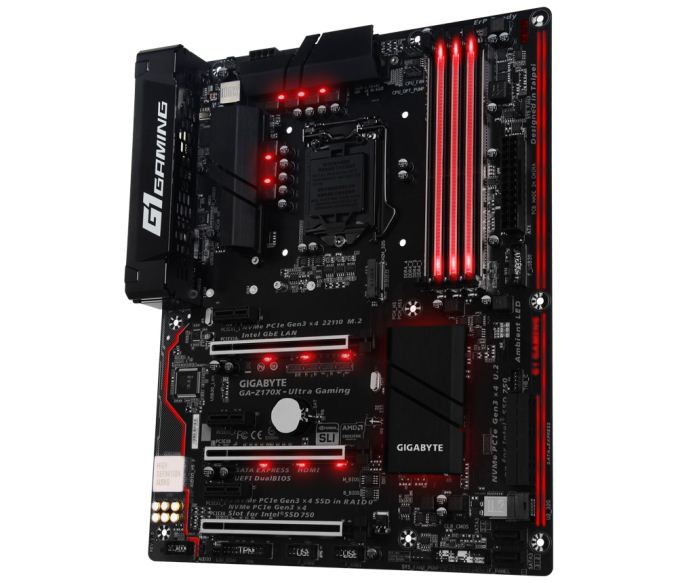
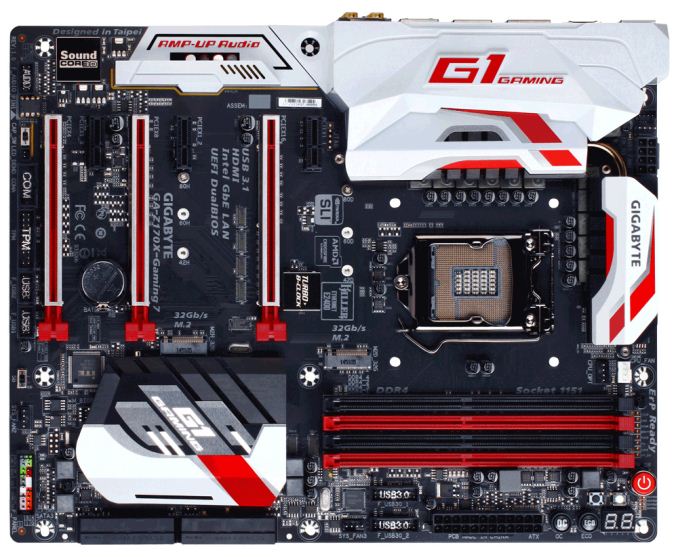
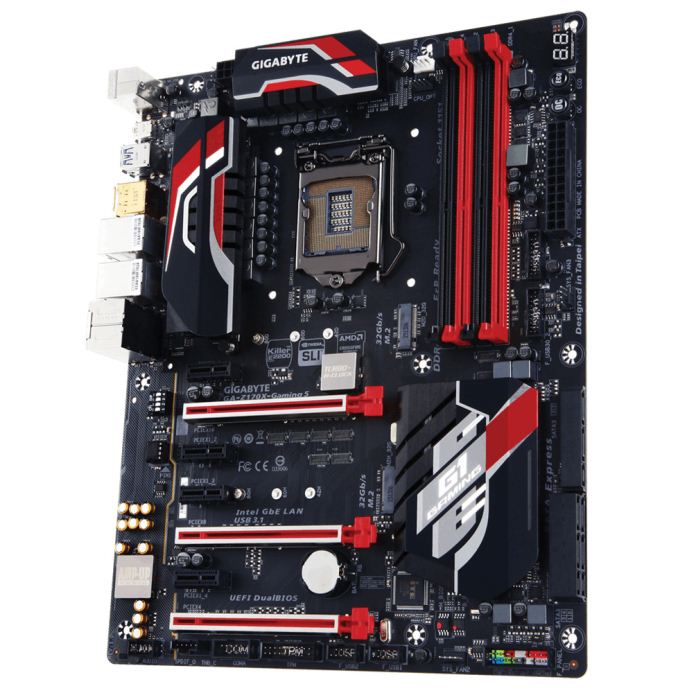
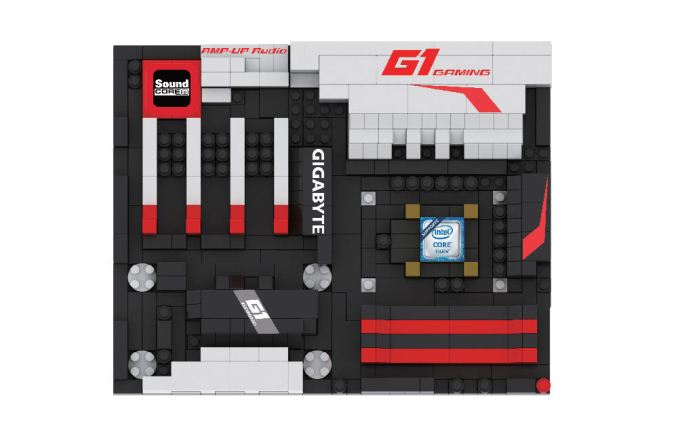
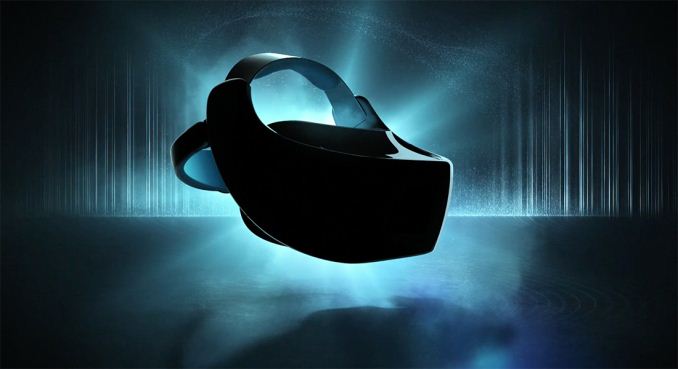
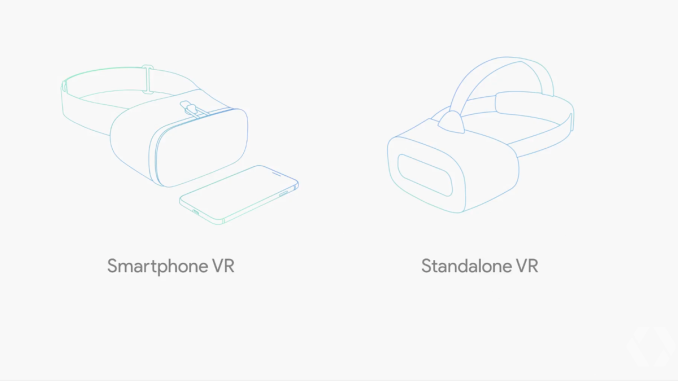


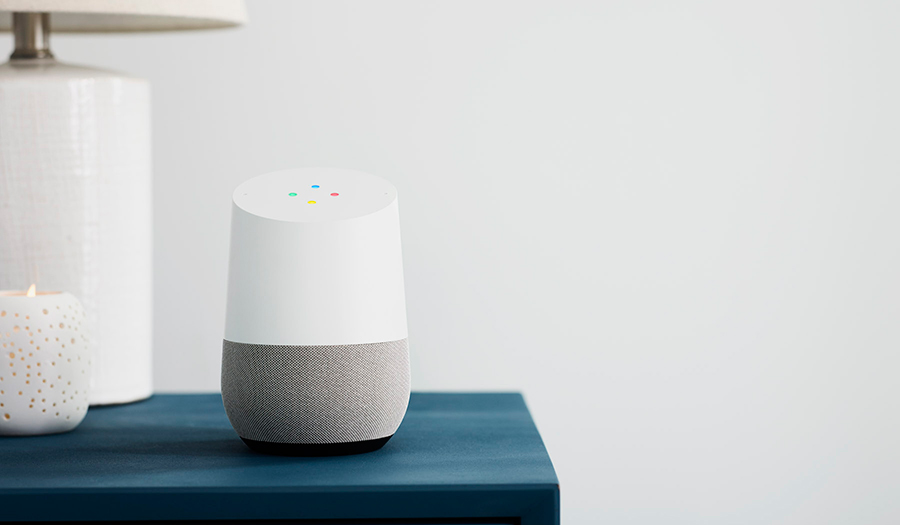

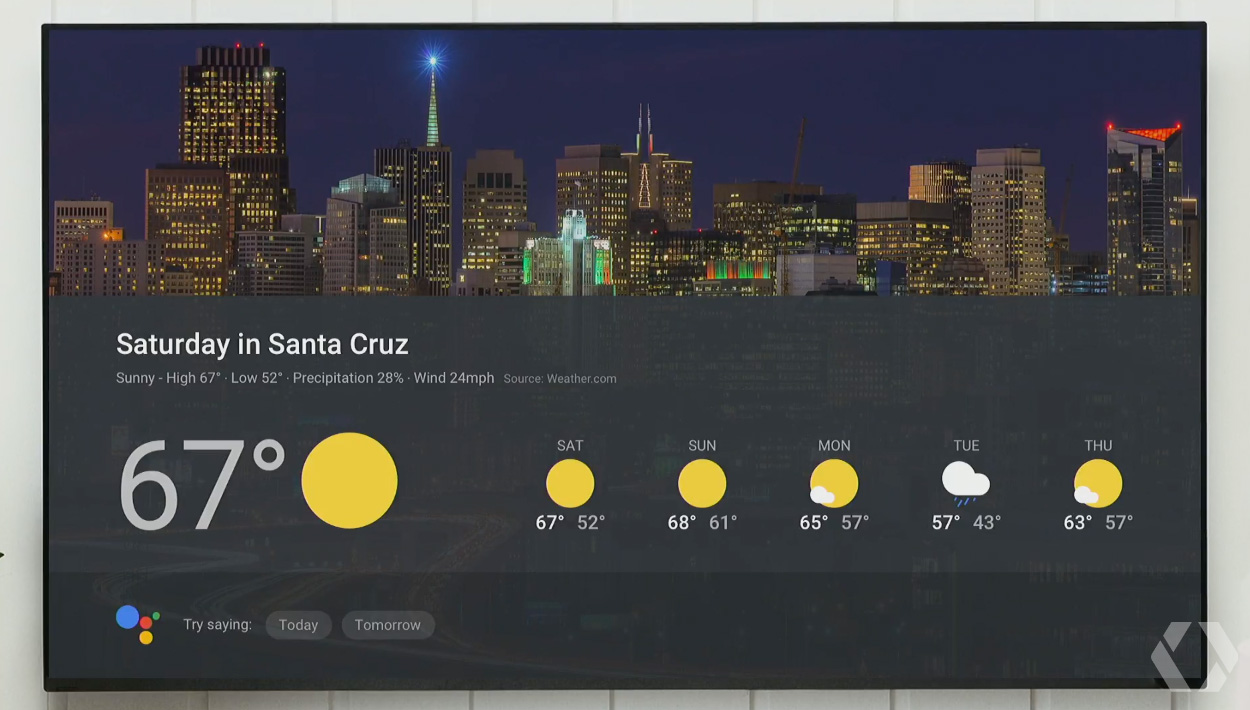


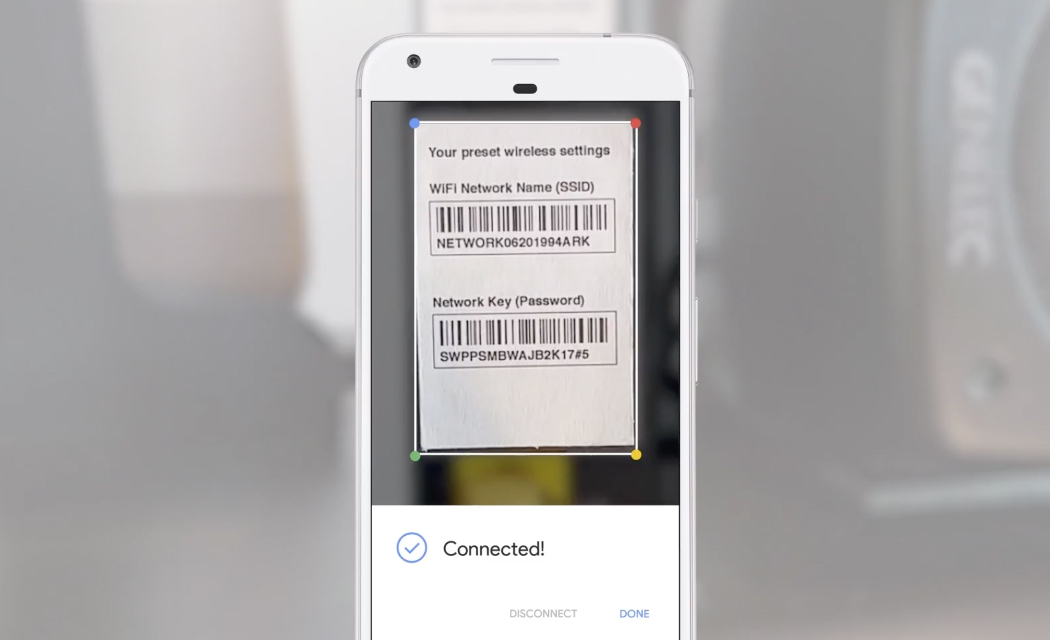
_575px.jpg)
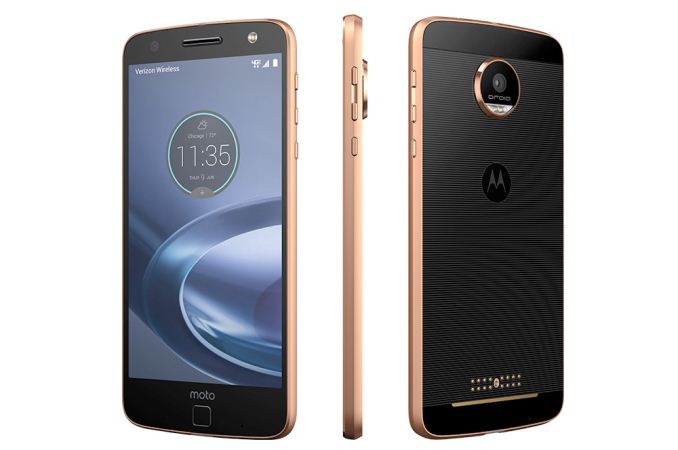
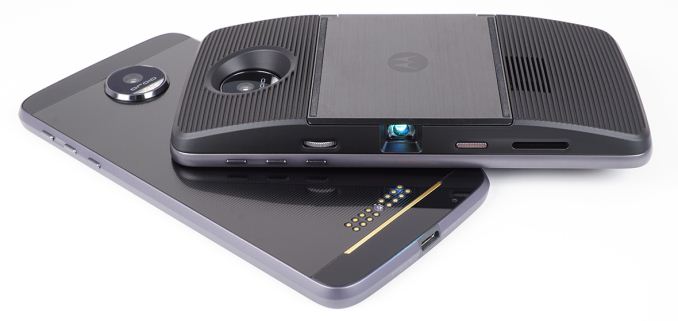
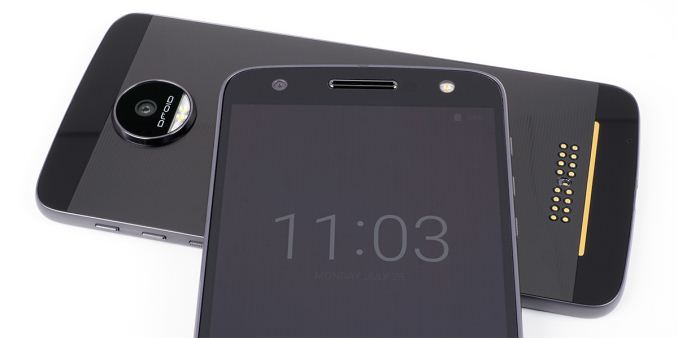
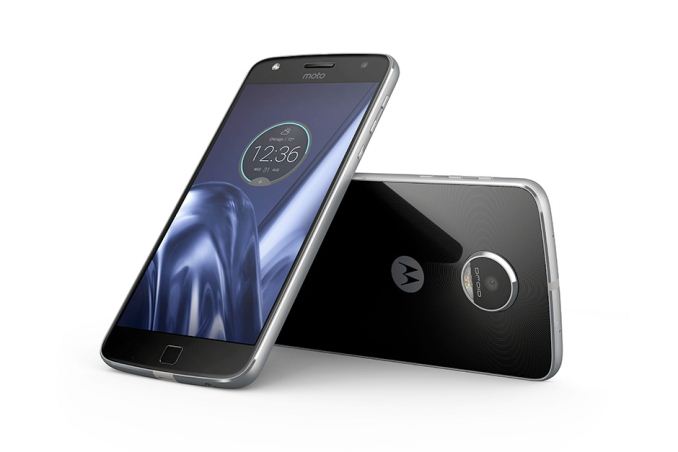
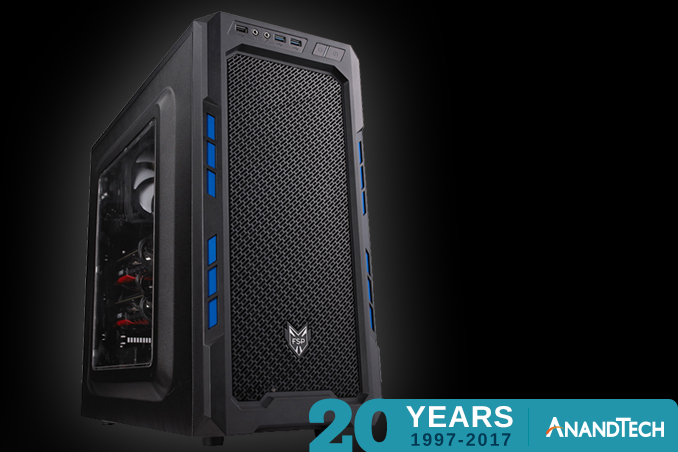
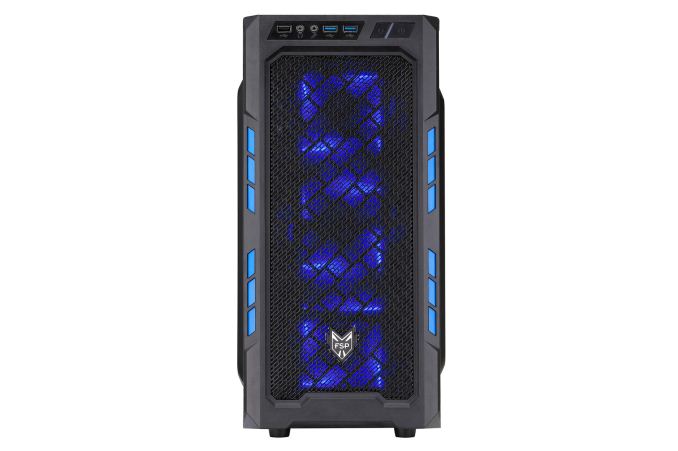
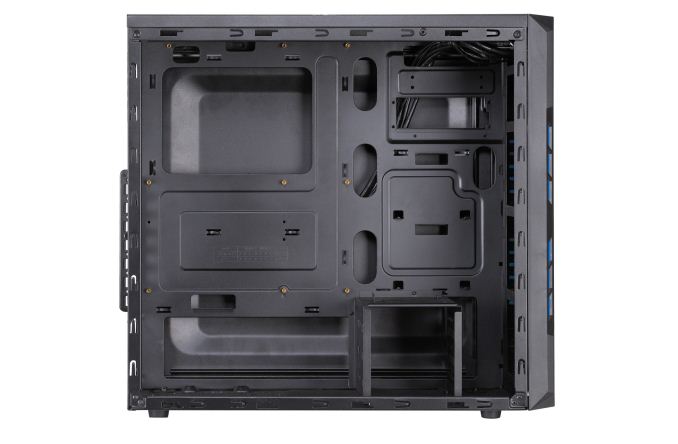
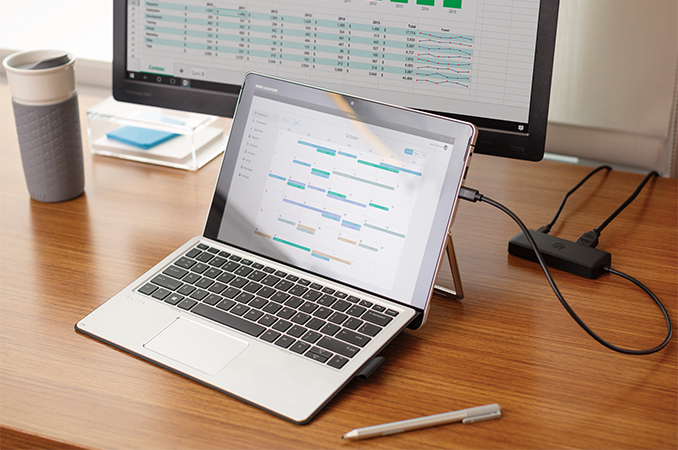

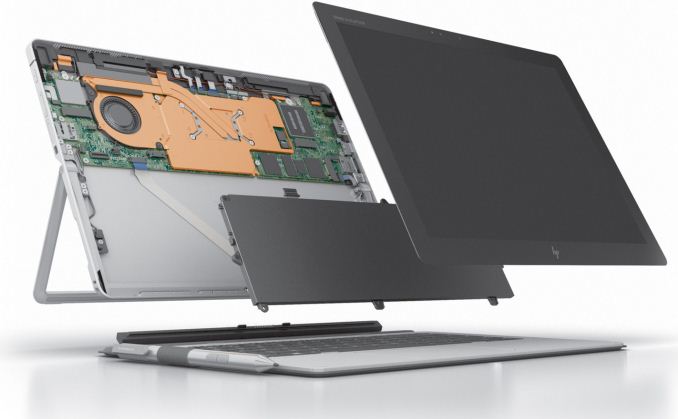

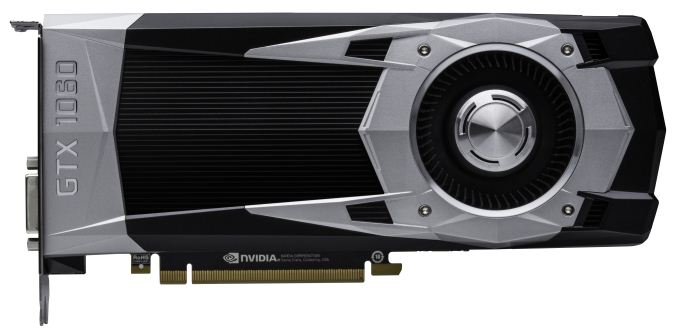
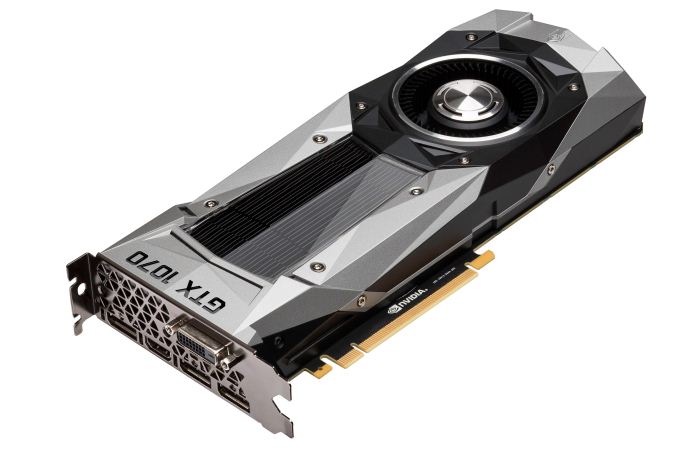
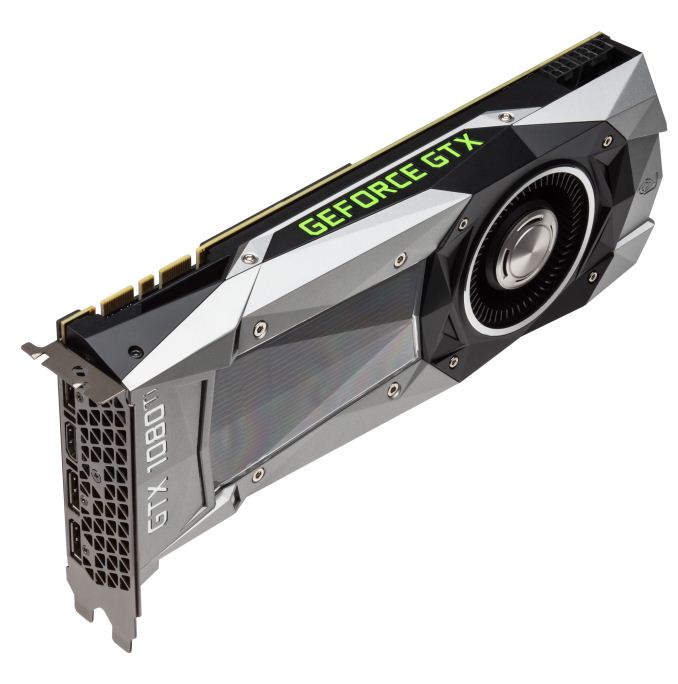
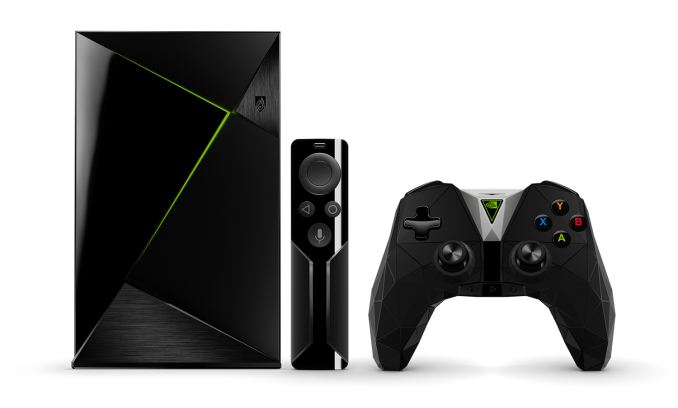
















Bookmarks